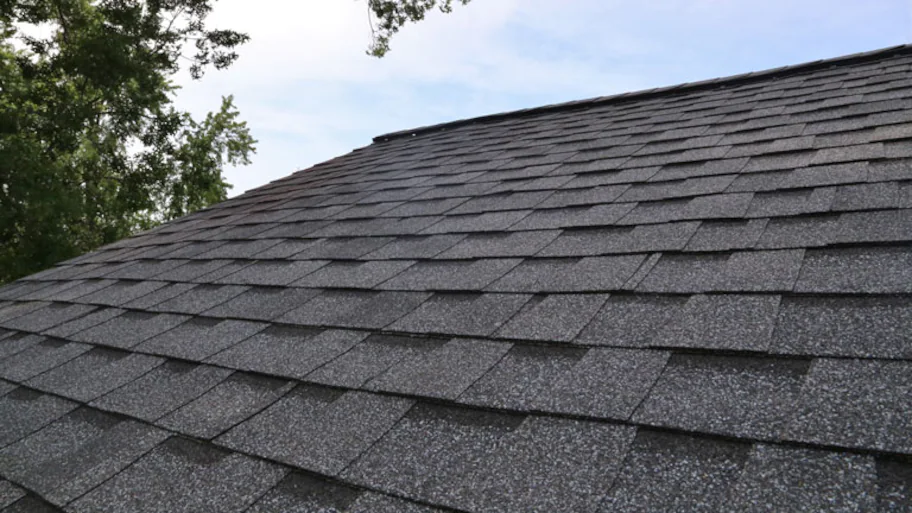Contrasting Prices Amongst Roofing Companies in Gainesville Florida
Best Practices for Ensuring Correct Roofing Air Flow
Making certain proper roof air flow is critical for the long life and performance of a roofing system. A well balanced consumption and exhaust air vent proportion, typically 1:300, plays a crucial duty, with intake vents ideally positioned at the lower side of the roof for cool air entrance and exhaust vents at the peak for cozy air leave. Routine inspections to determine obstructions and maintain clear airflow are vital. Maintaining insulation away from vents is vital to prevent air movement restriction. Recognizing these foundational elements sets the stage for even more in-depth understandings right into installation and maintenance methods that can considerably improve your roof's performance.
Understand Ventilation Essentials
Properly recognizing ventilation essentials is essential for guaranteeing the longevity and efficiency of roof. Reliable air flow alleviates wetness accumulation and temperature level extremes in the attic room, both of which can result in considerable structural damage in time. A well-ventilated roof helps in avoiding typical issues such as mold and mildew development, timber rot, and ice dams, which can compromise the honesty of the roof covering products and the underlying frameworks.
The key objective of ventilation is to assist in the movement of air, allowing for a regular exchange between the outdoor and indoor environments. This equilibrium is achieved via a mix of consumption and exhaust vents that interact to preserve optimal air flow. Consumption vents, normally located along the soffits or eaves, allow fresh air to go into the attic room, while exhaust vents, typically positioned at or near the roofing ridge, allow warm, humid air to get away.
Key variables influencing the effectiveness of roofing system ventilation consist of proper positioning, adequate sizing, and ensuring that both consumption and exhaust vents are unhampered. Regular evaluation and upkeep are critical to identify prospective clogs, damage, or inadequacies in the air flow system, therefore safeguarding the roof's performance and resilience.
Kinds Of Roof Covering Vents
Roofing system vents play a critical function in keeping efficient attic air flow and, by extension, the total health of the roof. Different kinds of roof covering vents are available, each with unique advantages customized to certain roof requirements. Ridge vents, for instance, are installed along the roofing's height, allowing warm, damp air to run away from the attic. They supply constant air flow and mix flawlessly with the roofline, making them both efficient and visually pleasing.

Soffit vents are installed under the eaves and operate in tandem with roofing system vents to guarantee a well balanced consumption and exhaust system. By enabling cooler air to enter from below, soffit vents facilitate the expulsion of warm air with upper vents. Gable vents, located on the exterior wall surfaces of the attic, offer one more reliable option, specifically in homes with gable roofings.
Examine Your Existing Air Flow

Following, consider the age and problem of your roofing products and air flow components. Older systems may not abide by existing structure codes or might have worn away over time, minimizing their efficiency. Conduct a comprehensive evaluation to recognize any signs of deterioration, such as corrosion, damage, or spaces that might jeopardize the system's efficiency.
Furthermore, gauge the attic temperature level and moisture levels. High temperature levels and moisture can show insufficient ventilation.
Installment Best Practices
Reliable setup of roof air flow systems is vital for guaranteeing optimum efficiency and durability. Correct installment starts with comprehending the details ventilation demands of the roofing and the structure it covers. This entails calculating the right proportion of consumption to wear down vents, generally adhering to the 1:300 guideline, which specifies one square foot of ventilation for every 300 square feet of attic floor great post to read space.

The placement of vents is just as vital. Consumption vents must be installed at the roofing's reduced side, frequently in the soffits, to permit cool air to go into. Exhaust vents, on the other hand, must be installed near or at the roof covering's height to promote the departure of cozy, wet air. This produces an all-natural airflow that assists keep temperature and wetness equilibrium within the attic room.
Seal all vent connections thoroughly to stop air leakages and possible water infiltration. Use top notch products and follow producer guidelines to make sure resilience and efficiency. Furthermore, integrating ridge vents with baffles can significantly enhance air flow effectiveness by protecting against wind-driven rainfall and snow from going into the attic.
Eventually, precise setup of roof covering air flow systems minimizes potential problems such as mold growth, ice dams, and structural damage, guaranteeing the roofing's integrity and the structure's total wellness.
Normal Upkeep Tips
Uniformity in upkeep methods is essential to making certain the long-lasting performance of roof covering ventilation systems. Normal evaluations are vital, preferably executed biannually-- in the spring and autumn. Throughout these inspections, make certain that vents are without particles, nests, and other obstructions that might hamper airflow. Look for any indicators of dampness build-up or mold and mildew, as these can suggest inappropriate ventilation or leaks (roofing companies gainesville florida).
Utilize a soft brush or a vacuum to remove dust and debris from intake and exhaust vents. Be careful not to harm the vent screens or louvers throughout the procedure.
Proper insulation is you can try here similarly important. Make certain that attic insulation does not block the vents, as this can severely restrict airflow. If any type of insulation has actually moved or worked out, check this site out reposition or replace it to maintain an effective obstacle.
Last but not least, replace any type of harmed or missing elements promptly. Damaged vents, fractured tiles, or tatty blinking can all add to insufficient ventilation and ought to be resolved immediately. Normal maintenance makes sure that the roof covering ventilation system operates efficiently, consequently prolonging the life expectancy of the roof itself.
Final Thought
Guaranteeing proper roof covering air flow is extremely important for maintaining the efficiency and resilience of a roof covering system. Adherence to the 1:300 consumption and exhaust vent proportion, paired with the tactical positioning of vents, is crucial.
A well balanced intake and exhaust vent ratio, frequently 1:300, plays a pivotal role, with consumption vents ideally positioned at the reduced side of the roof for cool air entry and exhaust vents at the optimal for warm air departure. Intake vents, normally situated along the eaves or soffits, enable fresh air to enter the attic area, while exhaust vents, typically positioned at or near the roof ridge, make it possible for hot, damp air to run away.
Soffit vents are installed under the eaves and job in tandem with roofing system vents to ensure a well balanced intake and exhaust system. By allowing cooler air to enter from below, soffit vents help with the expulsion of warm air via upper vents. Adherence to the 1:300 consumption and exhaust air vent ratio, coupled with the strategic positioning of vents, is necessary.